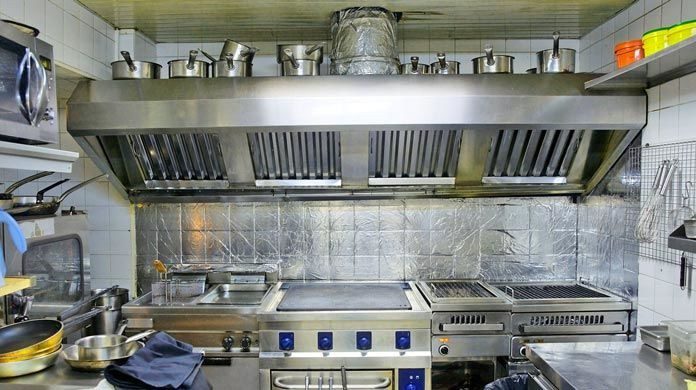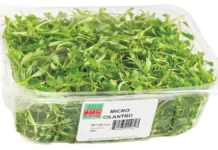
Exhaust hood systems play an important role in the restaurant kitchen, pulling heat, smoke, and odor away from cooking surfaces. This is for the protection of both employees and the restaurant facility itself, but over time, the greasy buildup inside hoods and ductwork can become a safety hazard of its own.

Protecting against this hazard requires regular and thorough exhaust hood cleaning, exhaust hood filters, and ductwork. Grease buildup inside the hood duct system is among the leading causes of restaurant fires, and proper maintenance and cleaning can drastically reduce this risk.
Below are some of the most frequently asked questions we get at SendaGuy Now from restaurant operators regarding their kitchen exhaust systems:
Question #1: As a restaurant owner, what is my responsibility in regards to cleaning my kitchen’s exhaust system?
Answer: According to NFPA-96 section 4.1.5: “the responsibility for inspection, testing, maintenance, and cleanliness of the ventilation control and fire protection of the commercial cooking operations shall ultimately be that of the owner of the system, provided that this responsibility has not been transferred in written form to a management company or other party.”
In other words, it is the owner’s responsibility to keep that system clean of grease and particulate buildup, and reduce the risk of a fire hazard. An incomplete cleaning performed by a low priced contractor (with most likely inadequate insurance coverage) will not protect the owner from the cost and litigation of a fire.
Question #2: How often should my kitchen exhaust hood cleaning be performed?
Answer: According to NFPA-96 Standard section 11.4 the “entire exhaust system shall be inspected for grease buildup by a properly trained, qualified, and certified person(s) acceptable to the authority having jurisdiction and in accordance with Table 11.4.”

Question #3: What is considered clean?
Answer: The industry standard is to clean down to the bare metal. If a system has not been cleaned properly for any length of time, sometimes it may take multiple cleanings before getting to bare metal. According to NFPA-96 section 11.6.2: “Hoods, grease removal devices, fans, ducts, and other appurtenances shall be cleaned to remove combustible contaminants prior to surfaces becoming heavily contaminated with grease or oily sludge.”
The best way to determine if a surface is clean is to inspect it. If it looks like there is an accumulation of grease on a surface, then it probably needs cleaning. If you need a more precise measurement, ask a member of the International Kitchen Exhaust Cleaning Association (IKECA) for a Grease Gauge. The Grease Gauge is a tool developed by IKECA to determine the cleanliness of a system by measuring the fuel accumulation on a surface.
Question # 4: Why do I need access doors, and why weren’t they originally installed in the system?
Answer: The most effective and efficient way to clean kitchen exhaust systems is by accessing as much of the system as possible. In order to reach parts of the system including horizontal and vertical ductwork, openings must be installed to clean these areas. Sometimes at the construction of the exhaust system, the proper amount of access panels needed to maintain the cleanliness of the system might not have been installed. In many systems, doors or panels were installed, but were inadequately sized to provide adequate cleaning. For example, it is extremely difficult to clean an 18” x 18” duct through an 8” x 8” opening.
NFPA-96 sections 7.4.1 and 7.4.2 recommend installation of openings large enough to permit thorough cleaning at a minimum of every 12 feet of horizontal ductwork and on every floor of vertical ductwork. It is also necessary to have access doors at every change of direction.
Question # 5: What documentation do I need?
Answer: The following documentation required by NFPA-96 sections include: 11.6.13- “When an exhaust cleaning service is used, a certificate showing the name of the servicing company, the name of the person performing the work, and the date of inspection or cleaning shall be maintained on the premises.” 11.6.14 – “After cleaning or inspection is completed, the exhaust cleaning company and the person performing the work at the location shall provide the owner of the system with a written report that also specifies areas that were inaccessible or not cleaned”and 11.6.15 – “Where required, certificates of inspection and cleaning and reports of areas not cleaned shall be submitted to the authority having jurisdiction.”
Many kitchen exhaust cleaning contractors provide reports showing pre and post cleaning photographs and other observations and recommendations important to your system. In-depth reports and certificates of completion will provide owners with documentation necessary for insurance representatives, fire marshals, and other authorities having jurisdiction.
What are the benefits of having my kitchen exhausted professional cleaned?
- Cleanliness
- Prevent disasters from occurring in the future
- Make your Hood Exhaust System efficient, adding years to its life
- Some insurance companies may offer a rate deduction with regularly scheduling cleanings.
As the resident Certified Facilities Management Professional at SendaGuy Now, I recommend that all of our restaurant clients take exhaust cleaning seriously and incorporate it into your preventive maintenance schedule. For more information on IKECA, visit their website.
Click here to read more of Eric’s articles for Total Food Service.
The SendaGuy Now app is free and is available for download at the Apple App Store and Google Play App Store. Interested restaurant operators and potential repair service partners can also go to sendaguy.com or call 800-214-5410 for service.























